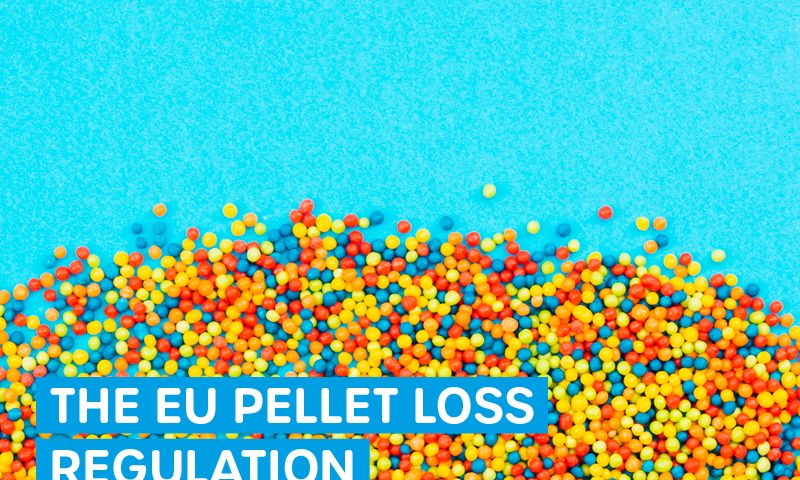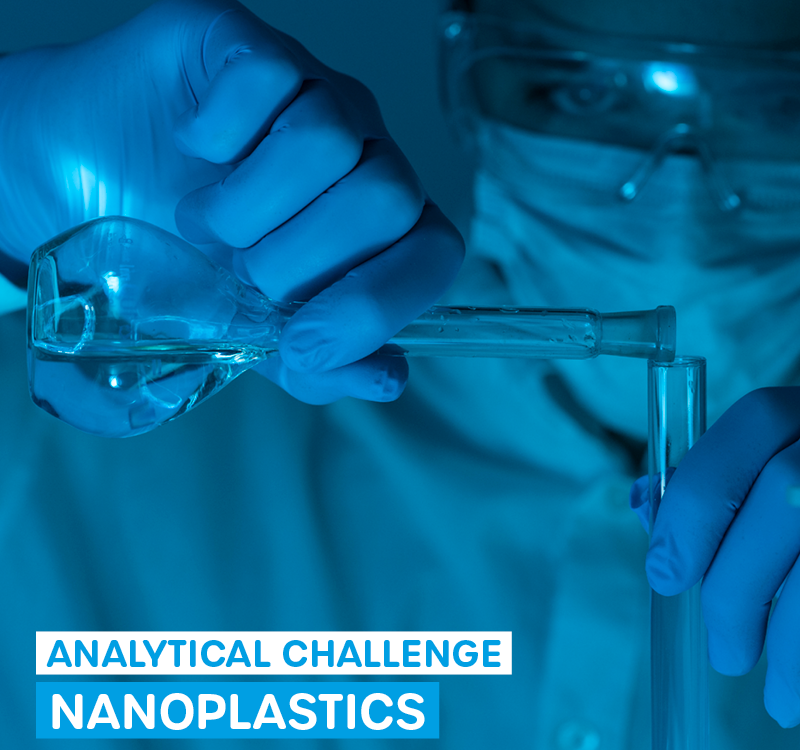
Neisse Microplastic Mapping
18. November 2025
The Invisible Plastic: How We Track Down PVA
9. December 2025The EU Pellet Loss Regulation: A Game Changer in the Fight Against Microplastics?
They are small, inconspicuous, and yet one of the greatest environmental threats of our time: plastic pellets, also known as nurdles. In September 2025, the EU made history with a groundbreaking regulation to prevent pellet losses. But can this regulation truly stem the microplastic tide?
The Invisible Threat: Why Pellets Are Underestimated
Imagine this: every year, up to 184,000 tonnes of plastic pellets leak into the environment in the EU alone – the equivalent of about 7,300 fully loaded trucks. Globally, as much as 230,000 tonnes end up in marine ecosystems each year. These tiny plastic beads (1–5 mm in diameter) are the raw material for nearly all plastic products – and the third-largest source of unintentional microplastic emissions in the EU, after tire wear and paint particles.
💡 Why are pellets so dangerous?</h2
- Toxic sponges: Their hydrophobic surface adsorbs persistent organic pollutants (POPs). Studies show PCB concentrations on pellets can be up to a million times higher than in the surrounding seawater.
- Fatal confusion: Seabirds, turtles, and marine mammals mistake them for food – with deadly consequences.
- Enduring persistence: Pellets remain in the environment for centuries, fragmenting into even smaller microplastic particles over time.
The Regulation: Binding Standards at Last
After years of debate, the EU reached an agreement in April 2025 and formally adopted it in September. The key elements are groundbreaking:
- Zero-loss target: For the first time, the goal of complete prevention of pellet losses is legally binding – no more voluntary measures.
- Mandatory risk management: All facilities handling more than 5 tonnes of pellets per year must develop detailed risk management plans.
- Independent certification: Operators handling more than 1,500 tonnes annually must undergo third-party certification.
- Maritime inclusion: For the first time, ship transport is regulated – crucial, since maritime transport accounts for 38% of all pellet movements in the EU.
- Significant penalties: Minimum fines of 3% of annual EU turnover for severe violations set strong incentives for compliance.
The promise: The European Commission forecasts a 54–74% reduction in pellet losses, equivalent to 28,000 to 136,000 tonnes fewer pellets entering the environment each year.
Scientific Reality Check: Hope or Hype?
Thompson et al. (2024) show in their twenty-year retrospective that microplastic pollution has already exceeded planetary boundaries. The new regulation is a crucial step – but science urges caution:
🔬 What research shows:
- The problem is bigger than expected: Recent studies from Texas reveal that stranded pellets are not only physically but also chemically highly contaminated. The bioaccessibility of adsorbed pollutants after ingestion is alarmingly high, at 13.1 ± 2.3% for slightly weathered pellets.
- Trophic transfer underestimated: Field studies in the Philippines detected microplastics in 85% of examined sardine populations, indicating clear bioaccumulation across food webs.
- Disasters as wake-up calls: The X-Press Pearl disaster in 2021 off Sri Lanka released an estimated 1,680 tonnes of pellets, demonstrating the devastating impacts of maritime pellet spills.
Critical Weaknesses in the Regulation
As pioneering as it is, the regulation leaves major grey areas:
- The exemption paradox: 98% of conversion companies and 97% of transport and storage operators are SMEs. The high threshold of 1,500 tonnes per year means that most actors self-declare compliance – without independent verification.
- Lack of monitoring standards: While the regulation mandates documentation of losses, it provides no standardized measurement methods. How can pellet losses be reliably quantified?
- Legacy pollution ignored: Already-released pellets persist for centuries. The regulation only targets future emissions.
- Enforcement concerns: Experience with voluntary programs like Operation Clean Sweep (since 1991!) has been disappointing. Will EU member states allocate sufficient resources for inspections?
Innovative Solutions: From Wasser 3.0 to Citizen Science
While the regulation defines the legal framework, innovation is driving technical solutions:
🔬 Wasser 3.0 PE-X®: Our solution for water without microplastics
With Wasser 3.0 PE-X®, we have developed an award-winning technology (Solar Impulse Efficient Solution Label) removes microplastics from water without filters. The “Clump & Skim” process uses hybrid silica gels to agglomerate microplastic particles. Remarkably, the method also works in saline seawater – critical for marine pellet spills. In the EU project REMEDIES, the technology is currently being optimized for Mediterranean applications.
🔍 Fluorescence-based analytics as a game changer
A major limitation in microplastic research has been the lack of standardized detection methods. Wasser 3.0 has achieved a breakthrough with fluorescence-marker-based analytics, enabling quantitative and reproducible detection of microplastics – essential for documenting pellet losses under the new regulation.
🌊 Citizen Science: The Nurdle Patrol
The Nurdle Patrol project in the Gulf of Mexico demonstrates how citizen science can enable large-scale pellet monitoring. More than 2,000 volunteers have collected data from 366 beaches, providing invaluable baseline data to evaluate regulatory effectiveness.
The Global Context: The EU as a Pioneer?
The EU regulation is the first legally binding and comprehensive framework addressing pellet losses worldwide. It complements the EU’s broader microplastics strategy, which targets a 30% reduction by 2030. Yet, international cooperation remains essential:
- The International Maritime Organization (IMO) has already issued recommendations for pellet transport by sea – now made binding within EU territory.
- Extraterritorial effect: Non-EU carriers must appoint EU representatives – a strong signal for global standard setting.
- The ongoing negotiations for the UN Global Plastics Treaty could be significantly influenced by the EU’s example.
Industry voices warn of potential competitiveness losses, yet scientific and economic analyses paint a different picture: the economic cost of plastic pollution—from tourism and fisheries losses to health impacts—far outweighs the costs of implementing the regulation. An OECD study estimates the annual cost of global plastic pollution at USD 300–600 billion.
Conclusion: A Historic Step – But Only the Beginning
The EU Pellet Loss Regulation marks a milestone, establishing the first binding standards for one of the most persistent sources of microplastic pollution. If effectively implemented, it could significantly reduce pellet emissions.
However, scientific evidence highlights that success depends on three key factors:
- Consistent enforcement: Member states must allocate sufficient resources for monitoring and sanctions.
- Technological innovation: Standardized monitoring and effective removal technologies are indispensable.
- Global cooperation: Pellet pollution is a global issue that demands global solutions.
One critical insight remains: legacy pollution persists. Even with an immediate and complete stop to new emissions, weathered pellets will continue to linger in sediments, shorelines, and food webs for centuries. The regulation is essential—but prevention must be complemented by active removal programs.
The fight against microplastics has only just begun. The EU Pellet Loss Regulation is a powerful tool—but only one of many needed to tackle this global crisis.






